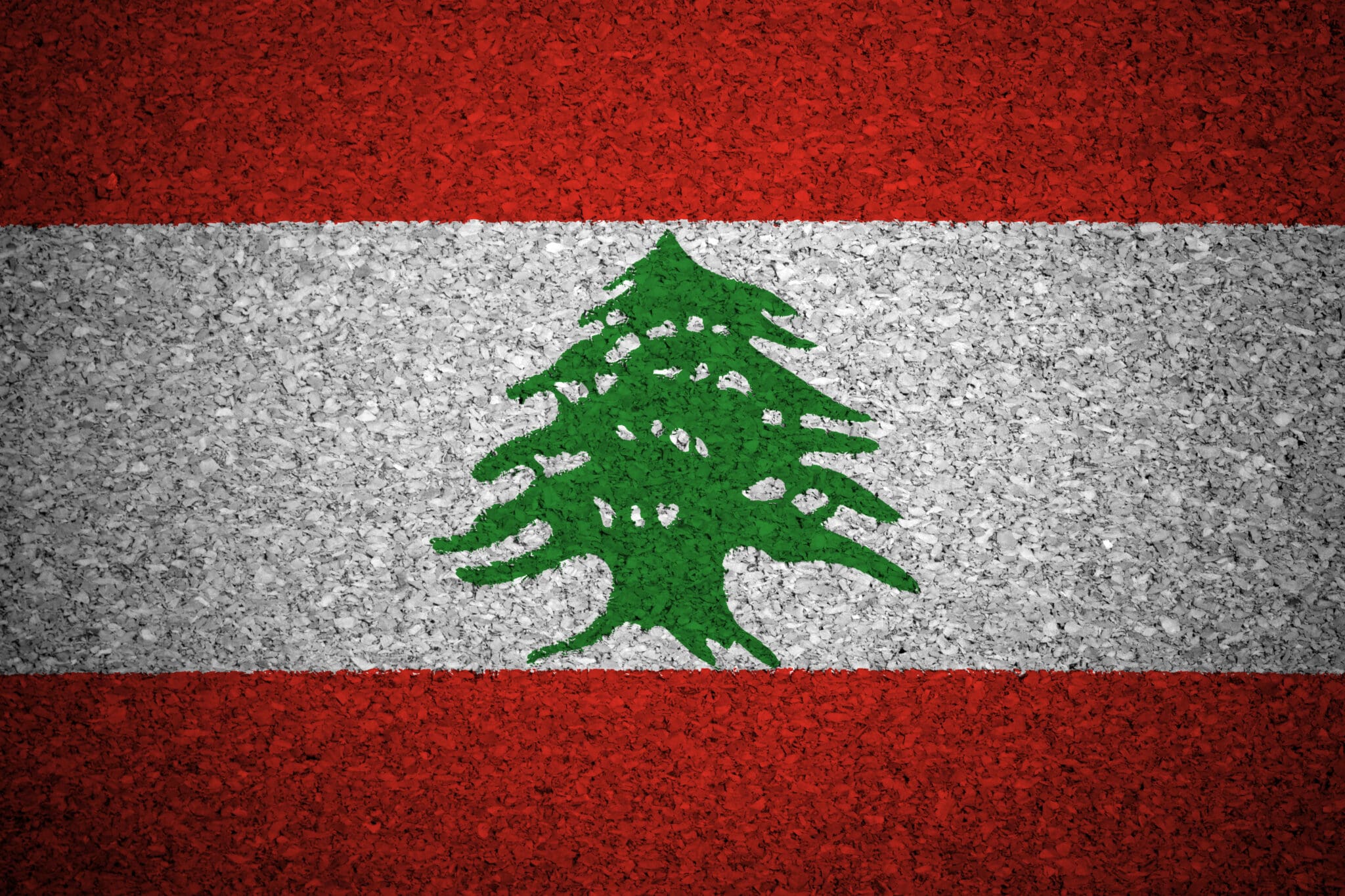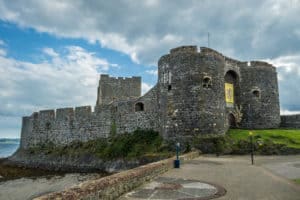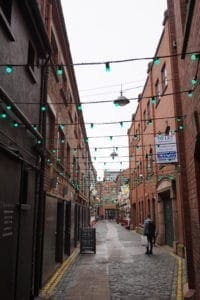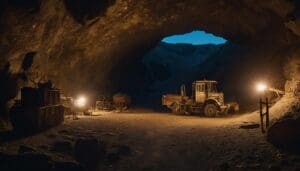Unfolding the Lebanese Flag: A Story Woven in Cedar, Red, and White!

Updated On: February 17, 2024 by Esraa Mahmoud
The Lebanese flag, like the country it belongs to, symphony woven into fabric from threads of ancient cedars, vibrant crimson passion, and the purity of untrodden snow. In its unassuming tricolours lies a story etched in resilience, echoing the whispers of ancient civilizations and the vibrant pulse of a modern nation.
The Lebanese flag, with its distinctive design and vibrant symbolism, stands as a powerful emblem of national identity and resilience. This iconic flag, featuring a horizontal triband of red, white, and cedar green, reflects the rich history, cultural heritage, and enduring spirit of the Lebanese people. Each element of the flag holds deep significance, weaving together a narrative of the country’s journey through triumphs and challenges.
The Lebanese flag is not merely a symbol; it’s a conversation starter, a window into the soul of a nation. It speaks of ancient cedars whispered by the wind, of resilience carved in stone, of a spirit that dances between the echoes of war and the melody of life. Coming up next, we take a closer look at the Lebanese flag history and the top sights of its country!
History of the Lebanese Flag!
The history of the Lebanese flag is a captivating tale that reflects the nation’s struggles, aspirations, and triumphs over the years. This iconic flag has undergone several transformations, each imbued with historical significance and a deep sense of national identity.
The origins of the Lebanese flag can be traced back to the era of the Ottoman Empire, during which Lebanon was part of the Greater Syria region. Under Ottoman rule, Lebanon used the Ottoman flag, a red background with a white star and crescent in the centre. However, with the fall of the Ottoman Empire and the subsequent French mandate in the aftermath of World War I, Lebanon saw the need for a flag that would symbolize its unique identity.
It was during the French mandate that Lebanon adopted a flag distinct from the Ottoman design. On 6 May 1920, Lebanon officially introduced a horizontal tricolour flag with three equal-sized bands of red, white, and cedar green.
The modern history of the Lebanese flag, as recognized today, traces back to December 7, 1943. On this significant day, Lebanon officially declared its independence from the French mandate, and the current design of the flag was adopted as a symbol of the nation’s newfound sovereignty. The cedar emblem, central to the flag’s design, represented the flourishing independence of Lebanon.
Over the years, the Lebanese flag has become more than just a symbol of national identity; it has served as a rallying point for the Lebanese people during times of both triumph and adversity. The flag has been proudly hoisted during moments of unity, independence, and resistance, becoming an integral part of the nation’s collective consciousness.
In recent decades, as Lebanon has faced various challenges, the flag continues to play a crucial role in expressing the resilience and determination of the Lebanese people. It stands as a visual testament to the nation’s complex history, the struggles for freedom, and the enduring spirit that defines Lebanon to this day. The Lebanese flag, with its rich symbolism and historic roots, remains a powerful and enduring emblem of a nation that has weathered storms and emerged stronger.
The Meaning and Symbolism of the Lebanese Flag!
The Lebanese flag is a powerful symbol that encapsulates the rich history, cultural identity, and aspirations of the Lebanese people. Each element of the flag, from its colours to the central emblem, carries deep meaning and symbolism that reflects the nation’s journey through challenges and triumphs.
The use of these specific colours and their arrangement held deep symbolism for the Lebanese people, embodying their aspirations for independence, unity, and connection to their natural surroundings.
The red band at the top of the flag symbolises the bloodshed and sacrifices made by the Lebanese people in their quest for independence. It serves as a poignant reminder of the struggles endured during this period of upheaval and resistance against foreign influence.
The white band, positioned in the middle, represents the snowy mountain ranges that cradle Lebanon. This choice of colour reflects the country’s lofty aspirations and the purity of its intentions in pursuing a sovereign and independent future.
The cedar green band at the bottom is a direct reference to the iconic Cedar of Lebanon, a symbol deeply rooted in the nation’s history. The cedar, an ancient and revered tree, has long been associated with Lebanon, symbolizing resilience, strength, and endurance. Placing the cedar at the base of the flag emphasizes the country’s commitment to standing firm like the majestic tree that has weathered the centuries.
The emblem at the centre of the white stripe features the Cedar of Lebanon. This central motif reinforces the national identity and pride of the Lebanese people, serving as a visual representation of their strength and rootedness in history. The cedar emblem was incorporated as a way of asserting Lebanon’s distinctiveness and breaking away from the symbols associated with the Ottoman era.
Top Sightseeing in Lebanon!
Like the Lebanese flag, Lebanon is such a mesmerising country with unique elements in each of its cities. Europeans who have been to Beirut often compare the Lebanese capital to Paris. The same aromatic coffee and fresh croissants are served on the verandahs of outdoor cafés, and the street style of the local fashionistas is every bit as elegant and elegant as the French.
Fans of antiquities will also find plenty to see in Lebanon. Not to mention, the Lebanese cuisine will not leave indifferent the gourmets, and the Mediterranean beaches will impress the sun-worshippers. Lebanon even has ski slopes, so holidays under the flag of the famous cedar can turn out to be very diverse and exciting.
Baatara Waterfall
The waterfall of Baatara falls from a height of 225 metres, and its singularity lies in the fact that it falls inside a limestone cave formed at a time when the earth was inhabited by prehistoric lizards. The cave is called “The Gap of Three Bridges” because as it falls, the Baatar’s waters fly past huge stone arches formed by nature itself. The waterfall is located in the area of northwest Lebanon.
National Museum of Beirut
The collection of the largest museum in Lebanon’s capital city enables you to understand the country’s intricate history and see ancient artefacts of great value first-hand.
A private collection of historical rarities was first exhibited in 1919. Since then, it has been continually expanded, and in 1942, the collection was moved to the halls of a purpose-built mansion.
The oldest exhibits in the museum date back to the 3rd millennium BC. There are antique statues, bas-reliefs from the ancient Roman period, and wall paintings.
Baalbek
80 km northeast of the capital is the ancient city of Baalbek, one of the most mysterious places on earth. The mystery of Baalbek lies in the fact that the techniques of erecting its structures have not yet been solved. The size of the stone blocks and the way they are worked impress even modern specialists, and therefore, scientists still disagree on the age of the buildings and their authors.
At Baalbek, you will find the ruins of Jupiter’s temple, surpassing the pyramid of Cheops in the size of its individual constituent blocks. The terrace of Jupiter’s temple, with three enormous slabs laid at its base. The Lebanese assure that the Trilithon of Baalbek is sacred.
The southern stone is a huge 1,050-ton block whose workmanship was never completed. There is also the Temple of Venus with a portico of four columns. In the 13th century, the area of Baalbek was turned into a fortress, as evidenced by the remains of the walls and defensive towers.
Soap Museum
Soap, invented by the Lebanese, is included in the list of achievements and inventions that drove progress. This is the subject of an exposition in a small museum in the old seaside town of Sidon. The exhibits tell the history of soap production and introduce visitors to the technology of the process.
The second important part of the exhibition is dedicated to olive oil. Visitors learn about how people first discovered the potential of the olive tree and the characteristics of different types of oil. At the Soap Museum, located in an old soap factory, you can learn about a proper hammam and the traditions of an oriental bath.
Roman Baths
Traditional Roman baths can be seen in the centre of the Lebanese capital. They were discovered during excavations in the middle of the last century. Berytus, the capital of Phoenicia during Roman times, was on the site of today’s Beirut, and the Roman thermae is fully identical to theirs elsewhere.
Roman Beritus had four steam complexes; its heating system allowed air to circulate freely between the walls, the marble-clad pools received hot water, and the stone pools received cold water. The public spaces of the thermae were used as a grandstand for speeches.
In modern Beirut, acoustic concerts are often held in the Roman baths. The grounds also serve as an exhibition of plants which were used as medicinal plants in Roman times – a sort of apothecary’s garden in the ancient ruins.
Virgin Mary of Lebanon
An important pilgrimage centre in Junia, 10km from Beirut, is dedicated to the icon of the same name. The statue was made in France at the beginning of the 20th century, and since then, it has become famous.
The statue of the Virgin Mary of Lebanon is cast in bronze. The height of the sculpture is 8.5 metres, and the pedestal is another 20 metres. The base is in the shape of a cone-shaped tower, and a staircase leads up, which pilgrims walk to the foot of the statue.
Wadi Qadisha
In the province of North Lebanon, you will find another Christian shrine of special value and a site of natural importance. The Wadi Qadisha Valley attracts pilgrims and sports and health enthusiasts alike and is protected by UNESCO as the site of one of the earliest monastic settlements. The Sacred Valley was home to a community of Christians for hundreds of years.
Wadi Qadisha stretches for 50km along the river of the same name. The steep cliffs and gorges surrounding the Sacred Valley are full of natural beauty – waterfalls and cedar groves. The largest monastery in Wadi Qadisha is Antonios Kozhaya, carved out of the Deir Mar rock and founded in the 10th century.
Sidon Fortress
The entrance to the port of Sidon in the Middle Ages was protected by the walls of the city fortress. With its political, commercial and religious importance, Sidon required strong fortifications, and in the 13th century, these were built by Crusaders on a small island connected with the mainland by a narrow spit.
The Mamelukes severely destroyed the fort during their attack on Sidon, and it was not rebuilt until the 17th century.
Modern visitors to Sidon Fortress can see two defensive towers connected by a stone wall. In the vaulted hall of one of them, there are the remains of old carved columns, and on the roof, there are the ruins of a small mosque. The tower is also worth climbing because of the panoramic views of Sidon and the sea.
Raouché and the Pigeon Cliff
The promenade in Beirut is called Raouché. The upmarket residential area impresses the traveller with beautiful sea views, rich mansions and restaurants serving traditional Lebanese cuisine. The western end of the promenade has a view of the rocky cliff, which is popularly known as Pigeon’s Rock. There is a legend that in ancient times, wives caught in adultery were thrown from the cliff, and now the rock arch is a tourist attraction: local boys jump from a great height into the sea to amuse the visitors.
Mont Pelerin
The fortress of Raymond of Saint Gilles, or Mount Pilgrims, was built in Tripoli. The first stone was laid in the very early 11th century on Khayage Hill. The count after whom the citadel was named was in charge of the building. Earlier, there were the garrisons of Persians, as the place had important strategic value.
The citadel was rebuilt several times and partially destroyed and reconstructed. Its modern dimensions are 140 metres in length and half in width. The building displays typical features of similar fortifications built by the Crusaders.
Mussalayha Castle
The medieval fortification known as the Connetable’s Fortress is located to the north of the modern town of Batroun. The fortress was built in the 17th century to guard the route from Beirut to Tripoli. It seems to float above the high rocky terrace above the Nahr el-Yauz River.
The walls of the citadel, built on the site of an earlier fortification, are made of stone blocks. The thickness of walls reaches in some places 2 meters.
The rock on which the citadel stands has served as a military observation and defensive post since ancient times. Restoration work in recent years has made the fort safe for visitors. Several entrances and exits have been arranged, the stairs have been reinforced, and sewage and water supply systems have been installed.
Palm Islands
The Palm Islands Biosphere Reserve in the Mediterranean Sea, 6km off the coast of Tripoli, is particularly popular with visiting tourists. Half a thousand palm trees, each with its own irrigation system, can be seen on the islands, and you can go boating, rock diving, and have a photo shoot against the ruins of an old lighthouse.
Cedar Forest
The cedar tree depicted on Lebanon’s flag has been a symbol of the country since time immemorial. The cedar forest in Horsh-Arz al-Rab is called God’s forest and is protected by the state. There are a few isolated trees that are centuries old and would take several people to girdle around them. The oldest trees in the Divine Forest are about 35 metres tall. The circumference of their trunks is 12-14 metres.
Balamand Monastery
One of the oldest in Lebanon, this monastery was built in the 12th century by Bernardine monks. The abbey was founded in the order’s characteristic style on a picturesque plateau by the sea. The buildings were soon abandoned and fell into disrepair. The restoration began in the 17th century when an Orthodox monastery was established in Balamand.
The carved iconostasis of the Church of the Assumption of the Blessed Virgin Mary and the Church of St. George deserve special attention. The monastery contains a rich collection of ancient manuscripts and church utensils.
In conclusion, Lebanon, a country nestled in the cradle of the Mediterranean, has faced a myriad of challenges throughout its history. The Lebanese flag, with its distinctive design, has been a constant companion in the nation’s journey through triumphs and tribulations. Its colours reflect the collective memory of struggles, the purity of intentions, and the beauty of the Lebanese landscape.






